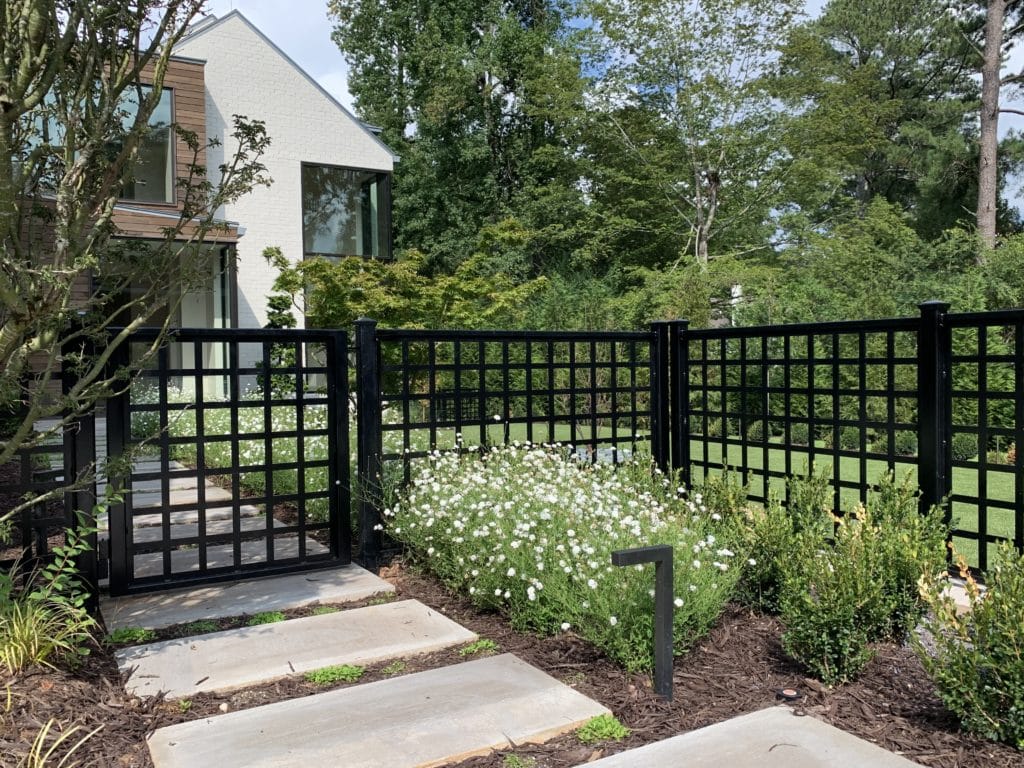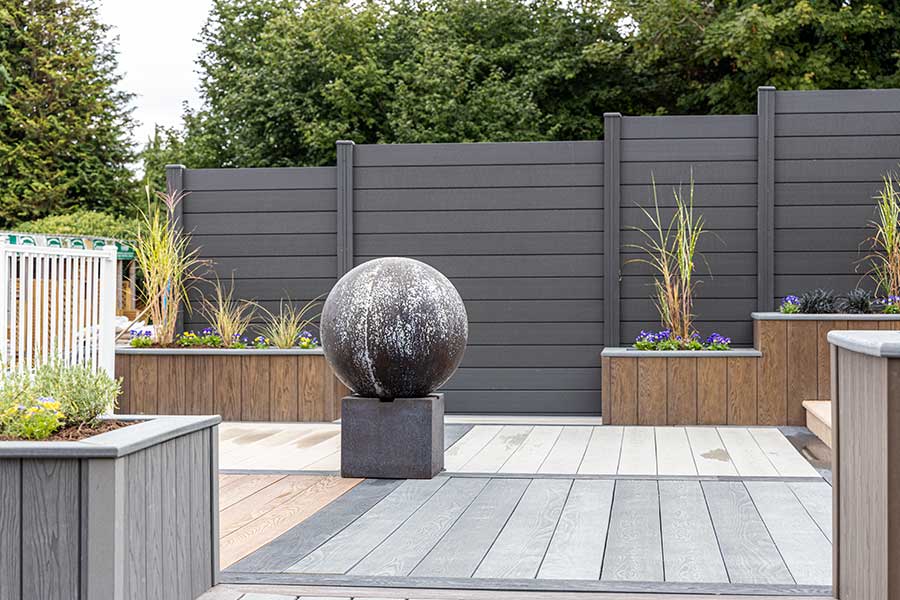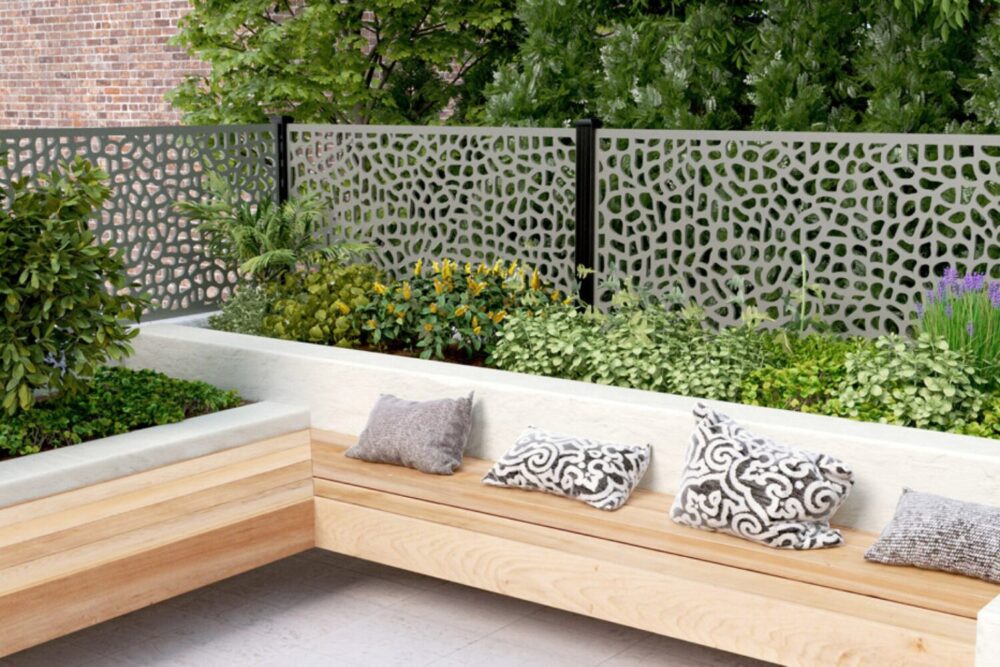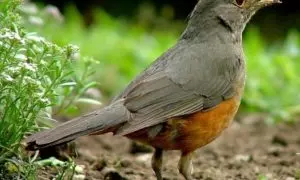When it comes to enhancing the aesthetics and security of your garden, choosing the right fencing option is paramount. From classic wooden panels to modern composite materials, the market offers a plethora of choices to suit various needs and preferences. In this guide, we’ll delve into the diverse array of garden fencing options available, highlighting their features, advantages, disadvantages, and considerations. Let’s take a look…
Wooden Fencing: Timeless Elegance

Source: somerlap.co.uk
Wooden fencing stands as a timeless choice, exuding a rustic charm that seamlessly blends with any garden landscape. Typically crafted from timber such as cedar, pine, or spruce, wooden panels offer natural beauty and versatility. They can be stained or painted to complement the overall theme of your garden, providing both privacy and a boundary. One of the key advantages of wooden fencing lies in its affordability and ease of installation. With proper maintenance, wooden panels can withstand the elements for years, making them a cost-effective option in the long run. However, it’s essential to treat wooden fencing regularly to prevent rot, warping, and insect damage.
However, timber fencing has its drawbacks, notably its susceptibility to rot, decay, and insect damage over time, especially if not properly maintained. Regular treatments and sealants are required to prolong its lifespan and retain its structural integrity. Additionally, timber fencing may warp, split, or become discoloured due to exposure to weather conditions, necessitating repairs or replacement. Installation can also be labour-intensive and time-consuming, particularly for larger properties or uneven terrain. Moreover, while timber fencing offers a natural aesthetic, it may lack the durability and security of metal or concrete alternatives, potentially compromising privacy, and safety.
Metal Fencing: Durability and Security

Source: yardzen.com
For those prioritizing durability and security, metal fencing presents a compelling choice. Common materials include steel, wrought iron, and aluminium, each offering unique benefits. Steel fencing, for instance, boasts exceptional strength, making it ideal for high-security areas. Wrought iron fencing, on the other hand, adds a touch of elegance with intricate designs, perfect for enhancing the visual appeal of your garden. Moreover, metal fencing requires minimal maintenance and is highly resistant to pests and rot. While initial costs may be higher compared to other options, the longevity and sturdiness of metal fencing make it a worthwhile investment for homeowners seeking long-term solutions.
On the other hand, metal fencing presents certain disadvantages, including susceptibility to corrosion in moist or salty environments, requiring regular maintenance to prevent rust and deterioration. Installation can be complex and costly, necessitating specialized tools and expertise. Moreover, metal fences may lack the aesthetic warmth and natural charm of wooden counterparts, detracting from the visual appeal of outdoor spaces. Additionally, some metal fences can conduct heat, potentially posing safety risks during hot weather. Lastly, certain metal fencing materials, such as wrought iron, can be heavy and cumbersome to handle, complicating DIY projects and increasing installation challenges.
Vinyl Fencing: Low-Maintenance Solution

Source: barretteoutdoorliving.com
Vinyl fencing has gained popularity in recent years for its low-maintenance nature and durability. Made from PVC (polyvinyl chloride), vinyl panels are resistant to fading, rot, and insect damage, making them an excellent choice for gardens in varying climates. Additionally, vinyl fencing comes in a range of styles and colours, allowing homeowners to customize their outdoor space according to their preferences. One of the standout features of vinyl fencing is its ease of upkeep. Unlike wood, vinyl doesn’t require staining or painting, saving both time and money on maintenance tasks. Simply rinsing the panels with water occasionally is sufficient to keep them looking pristine year after year.
It must be noted that vinyl fencing presents certain disadvantages despite its popularity. While initially cheaper than materials like wood or metal, vinyl fencing can be costly to repair or replace if damaged, as individual components often need full replacement. Extreme temperatures can cause vinyl to expand or contract, leading to warping or cracking over time. Additionally, its synthetic appearance may lack the natural charm of wood or the sleekness of metal, potentially detracting from the aesthetic appeal of outdoor spaces. Limited colour options and difficulty in customisation are further drawbacks. Lastly, the environmental impact of vinyl production and disposal raises concerns about sustainability.
Composite Fencing: The Perfect Blend of Strength and Sustainability

Source: awbsltd.com
Among the newer entrants to the fencing market, composite fencing has been gaining traction for its innovative design and eco-friendly credentials. Composed of a blend of recycled wood fibres and plastic, composite fencing offers the best of both worlds: the natural look of wood and the durability of plastic. One significant advantage of composite fencing lies in its resistance to rot, decay, and insect infestation. Unlike traditional wood, composite materials won’t warp or splinter over time, ensuring a long-lasting solution for your garden. Additionally, composite fencing is highly sustainable, as it utilises recycled materials, contributing to environmental conservation efforts.
Composite tends to be more expensive than traditional materials like wood or vinyl upfront, potentially deterring budget-conscious homeowners. Although composite fencing is resistant to rot, insects, and decay, it may still be susceptible to mould growth in damp environments, requiring periodic cleaning and maintenance, unless the composite material is capped with an extra polymer layer. Additionally, composite fencing can lack the natural aesthetic of wood, resembling a plastic-like appearance. Limited colour options and potential fading over time are further considerations. Installation may also require specialised tools and expertise, adding to the overall cost and complexity of the project. Make sure to thoroughly research your composite fencing supplier before purchasing, or request samples to inform your decision-making process.
In conclusion, choosing the right fencing option for your garden involves considering various factors such as aesthetics, durability, maintenance requirements, and environmental impact. Whether you opt for the timeless elegance of wooden fencing, the durability of metal, the low-maintenance appeal of vinyl, or the innovative design of composite materials, there’s a solution to suit every preference and budget. By carefully weighing these factors and exploring the diverse range of options available, you can create a garden space that not only enhances the beauty of your property but also provides security and tranquillity for years to come.


















